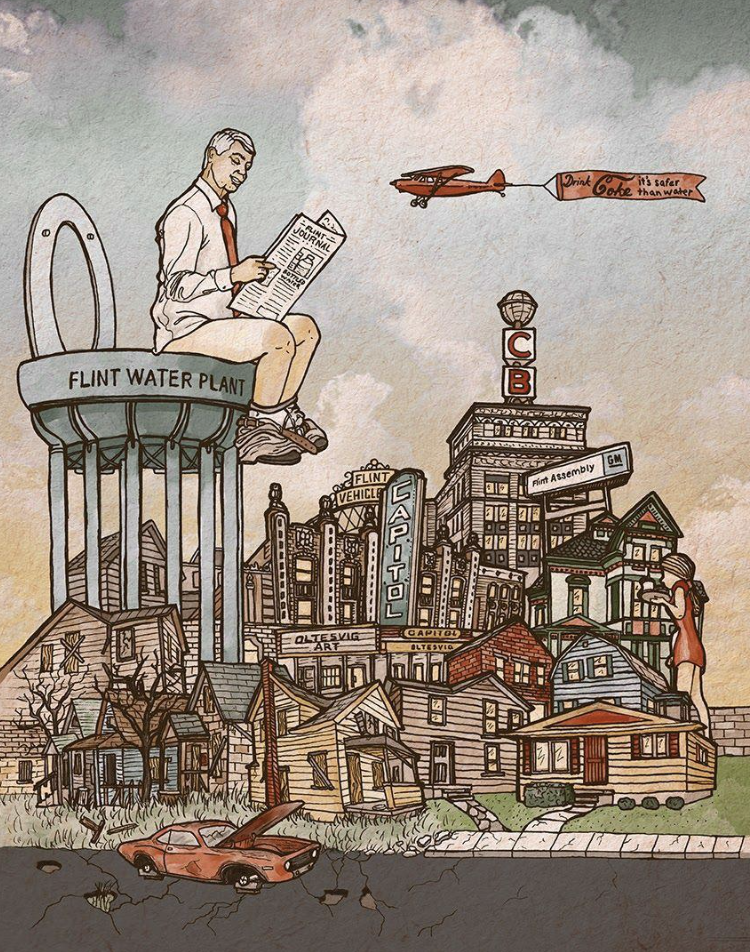Kristi McCluer, American
Eagle Creek Fire, 2017
McCluer, a novice photographer, was hiking to find a good view of the Eagle Creek Fire when she stumbled on this scene. Her photograph quickly went viral, perhaps, because she perfectly captured environmental justice and climate denial. Golf, a symbol of wealth and environmental carelessness, appears to be the only concern for the white men in the foreground. Behind them, a fiery hellscape lights up the mountain as smoke fills the sky. Wealthy individuals can afford to be unperturbed by such crises, continue their game of golf, withstand and even deny environmental disaster. However, through an invisible contrast, the photograph forces the observer to think about those who cannot afford this kind of leisure when facing environmental harm. Label by Katie Lee




